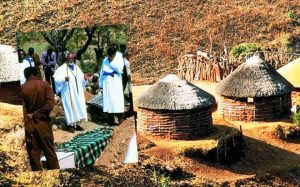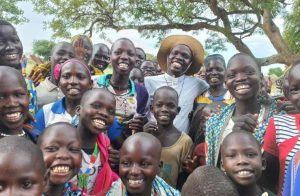In South India, particularly in the state of Karnataka, there is one form of theatre that defies most rules of popular art, perhaps even societal norms; where the hero is just one among many actors on stage; where the villain looks so much grander and has so much more fun, that he ends up overshadowing the hero.
This is where no two performances, no two series of dialogue, are ever the same. Shows are typically debated for days after the performance, where an actor can become so famous that he is identified by his role, and where the entangled web of the caste system is surprisingly absent. We call this Yakshagana.
Karnataka has full claim to this art form, which originated in its villages, in open grounds or under shoddily put-up canvas tents covering dirty mats and creaky folding chairs. Indeed, Yakshagana is recognised as one of the traditional art forms of Karnataka.
Apart from the bhajans and religious discourses, Yakshagana, literally meaning the song of the Yakshas, or demi-gods, offered a fun way to learn one’s Hindu epics and their thousand and more stories.
Yakshagana is a mix of folk theatre, dance, music, and a pantomime of sorts. Today, it constitutes an art form that thrives amidst the general decline of traditional arts elsewhere in India and the region at large. Almost all artistes, professional or otherwise, are usually Hindu. In addition, all are men, including those playing the female characters. In a society of male dominance, it was not considered respectable for a woman to be seen on stage before an audience, and this tradition has continued.
At the very core of Yakshagana is the himmela. This entourage of musicians includes a narrator, singers (bhagawatha) and musicians playing the chande and maddale drums, and the harmonium. The mummela is a team of actors who interpret and act out the songs from a section of a particular myth. Their performance, usually touching on just one main story and a few sub-stories, is called the prasanga. Performances usually begin just after dusk with elaborate drums in what is called the peetike, during which the narrator sets the background to the play with songs and music, before the actors come on stage to roar and dance until dawn.
There are regional variations in Yakshagana performances. Depending on whether you are in the coastal parts of Karnataka or in the northern districts, you could be watching either the badagutittu or tenkutittu styles, distinguishable both by costumes and by the way the various myths have been interpreted into poetic form.
Yakshagana is also interesting in its use of symbolism. The stage has few props, if at all. Audience participation is always a central component of the performance. It is expected that the actors will somehow involve some members of the audience in their interpretations, often in a humorous way. Spontaneity is important here, with the actors improvising their lines to suit the audience. It is no surprise then, that actors will typically speak extempore while on stage. For instance, if an important guest is present in the audience, the person will often be referred to in a humorous manner. Or, if a certain character is being mischievous, another actor could warn them of the presence of an important guest or senior artist or teacher, who could come out and take them to task.
Such interludes also offer a bit of levity in the midst of what are often very sombre stories. As long as the story itself does not veer off from the original plot, there are no restrictions regarding the introduction of new characters. As such, with changes in the demographics of audiences and changing tastes, issues of corruption, bribery and bumbling governments find mention in the performances, breathing fresh life into age-old stories.
Sometimes, the interpretation can go on for a very long time if the artiste is experienced and knows his character well. Most actors tend to grow into certain roles, starting from a junior part in a production and working, over the course of a decade or more, until they ‘graduate’ into a role that becomes a signature.
The form of Yakshagana itself has seen significant experimentation, as well. The late Shivaram Karanth, an award-winning Kannada writer, played a significant role in poplarising Yakshagana. He also tried experimenting, to see if it could be performed without speech at all – like a ballet. Though these pieces were well attended, the experimentation was heavily criticised by ‘purists’, and it never really took off.
Other changes have seen increasing numbers of amateurs and young people showing interest in Yakshagana. In this, the popularity of the art form in urban areas, such as Bangalore, has helped a great deal. Even while teenagers in the coastal districts aspire to become, perhaps, software professionals, during the summer many continue to attend theatre workshops – and will, more often than not, put a vesha on.
Even after school begins again, many will continue to attend Yakshagana activities during the weekends. Though it is a thriving art, no one could give an estimate of how many artistes might be involved in Yakshagana, owing to the fact that there is no governing or one organising body under which they might learn and work.
– Deepa Bhasthi






